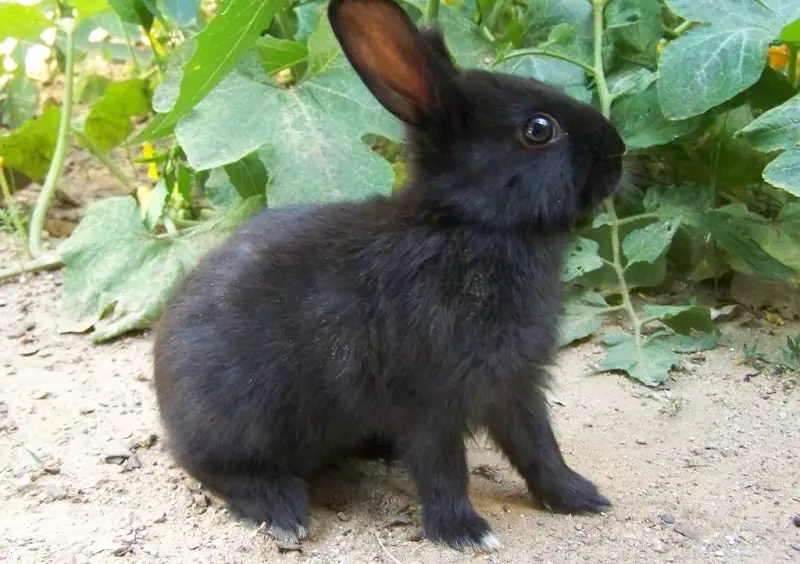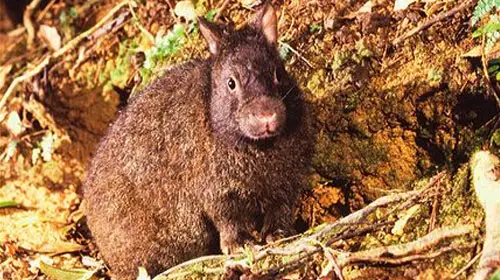Last Updated on June 12, 2023 by Leonard Harper
The Amami Rabbit is an endangered rabbit species that live in the wild. They are referred to as living fossils because they are very ancient.
The species is only found in two islands in Japan called Amami Ōshima and Tokunoshima. They are also called the Ryukyu rabbits.
Amami Rabbits used to live in the Asian mainland. However, all the mainland rabbits died and only the ones living in the islands survived.
If you are curious about this rare species, we will be taking a deeper look at it in this article. You will learn more about why they are endangered, what they look like, whether you can keep them as pets, and much more. Let’s get right into it.

Contents
- 1 Size of the Amami Rabbit
- 2 Can You Buy the Amami Rabbit?
- 3 Breeding Habits of This Rare Rabbit
- 4 Amami Rabbit Lifespan
- 5 Temperament and Behavior
- 6 What Does an Amami Rabbit Eat
- 7 Where Do Amami Rabbits Live
- 8 Why are Amami Rabbits Endangered?
- 9 Conservation Efforts to Protect this Endangered Rabbit
- 10 Conclusion
Size of the Amami Rabbit
The Amami Rabbit is small and weighs between 4.4 – 6.6 lbs (2-3kg). The males tend to be smaller than the females. Male Amami Rabbits are 451mm in length while female Amami Rabbits are 452mm in length.
The male tails are longer than the female tails. Males have 25-35 cm long tails while females have 25-32 cm long tails. Their bodies are different from those of other rabbits and hares.
Rabbits are known for their rather large ears and big eyes. The Amami Rabbits have short ears and small eyes. Their noses are short and pointed, and they have short legs too.
Amami bunnies have dark brownish coats and thick bodies. Their feet have long curved claws which are well-suited for digging. The rabbits dig underground burrows to hide in and create passages to use while moving through the forests they live in.
Can You Buy the Amami Rabbit?
The Amami Rabbit is very rare and is only found in two places in the entire world. Being an endangered species, they are monitored by wildlife professionals and specialists.
The few remaining ones have been left in their natural habitats so that they can thrive. This means that you cannot buy one or keep them as pets. Amami Rabbits don’t do well in captivity.
Breeding Habits of This Rare Rabbit

Amami Rabbits are promiscuous rabbits just like other rabbit species. Their gestation period is not known but looking at fellow Leporid species, it is estimated to be between 37-39 days.
Amami bunnies breed two times per year from March to May and September to December. The females have 2 litters a year and give birth to 1-2 babies per litter.
They keep their babies in underground burrows and take care of them until they are 3-4 months old. At this age, the babies can independently take care of themselves.
Amami Rabbit Lifespan
Amami Rabbits are endangered and their numbers have been declining. However, they have long lifespans and if they survive the harsh living conditions in the wild, they can live for as long as 10 years.
Temperament and Behavior
The Amami Rabbit species can communicate using calling noises and clicking sounds. This is another trait that differentiates them from other rabbit species.
Their calling sounds are like those made by a pika. They will thump their hind legs on the ground producing sounds as a signal to the others of predators. Mothers will also call their children when they get back to their nest.
The Amami Rabbit is called the ‘midnight bunny’. This is because the mothers dig tunnels underground (up to 3-feet deep) and hide their babies there by covering the hole with plants and soil. They will then come back at midnight to dig them out and feed them.
What Does an Amami Rabbit Eat
Amami Rabbits are herbivores and only feed on vegetation. They eat 29 plant species in their natural habitats. They will feed on shrubs, ferns, shoots, grass, acorns, and sprouts.
Some common plants they feed on are bamboo shoots, berries, and the leaves and stems of sweet potatoes. During cold seasons, they eat tree bark and twigs.
Where Do Amami Rabbits Live
The Amami Rabbit live in thick forests and grasslands which provide good hiding areas for them. 85% of their natural habitats are covered by trees. The Mangrove Primeval Forest is one of their natural habitats.
It is found in Amami Ōshima which is a tourist site. People visit the place for its offshore reefs, clear water, Amami Park, and the Mangrove Primeval Forest.
It is hard to see the Amami Rabbit because they are nocturnal and come out mostly at night. They also duck and hide if they see humans.
Why are Amami Rabbits Endangered?

The Amami Rabbit is listed under the International Union for Conservation of Nature’s Red List. It’s an endangered species and there are less than 5,000 surviving Amami Rabbits in the world.
When the Japanese government noticed that the animal was nearing extinction by being hunted down by humans, they gave the species legal protection in 1921. That did not work very well.
In 1963, the Japanese government took another measure of declaring the species a Special National Monument. All hunting and trapping of Amami Rabbits were banned.
Later, a mongoose invasion in their natural habitat threatened the species. The mongoose preferred to eat only the Amami Rabbits and this reduced their numbers. The government gave an order that all the mongoose be eradicated to save them.
Conservation Efforts to Protect this Endangered Rabbit
The Amami Rabbit is only found in the wild and faces different predators every day. Their natural habitats are also threatened by human industrialization like the paper industry.
Extra measures need to be taken to preserve this species. Wildlife rangers are actively trying to conserve them. They are working on restoring their natural habitats and reducing their predators.
Conclusion
The current Amami Rabbits are surviving rabbits that were left behind in the islands when the rest of their species in the mainland died.
There are few numbers remaining and the breed is endangered. Their population is estimated by the count of their fecal matter.
They can be compared to the short-eared volcano rabbit that is a native of Mexico and a fellow endangered species. Conservation of the natural habitats of these animals should be a priority to preserve them and prevent their extinction.
Leo, a novice urban farmer and avid writer hailing from Chicago, Illinois, finds his joy and inspiration in the company of rabbits. His affection for these cuddly creatures started when he was gifted a Mini Rex, named Poe, on his 18th birthday. Poe soon became a source of comfort, companionship, and surprisingly, creative inspiration. He soon expanded his brood to include three more rabbits of different breeds, each with their own engaging tale.
